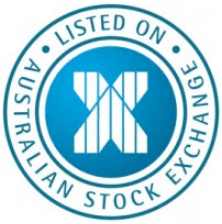
Stan Shamu for Chris Weston, Chief Market Strategist at IG Markets
Global markets seem to be a bit overwhelmed at the moment, with investors juggling geopolitical risk, corporate earnings, corporate activity and economic data. While news that a Gaza ceasefire was agreed gave European equities a kicker, it wasn’t long before an escalation of the Russia-Ukraine situation put risk on the back foot again. President Putin reportedly ordered his government to investigate retaliatory sanctions against the EU and US. There is also renewed build-up of Russian troops at the Ukraine border resulting in fears of Russia invading Ukraine.
With risk on the back foot, the S&P traded at its lowest level since end of May. Positive US data is now starting to be a problem for US equities; remember in the past months, positive data translated to gains for equities. Now with tapering a done deal and the next focus being on the Fed funds rate, then positive data is now seen as hawkish.
Traders focused on the best ISM non-manufacturing reading since December 2005 and some hawkish comments by Fed member Richard Fisher which were released post-market. Mr Fisher suggested he didn’t dissent at the July meeting because the rest of the committee is moving in his direction anyway. Other Fed members who have aired hawkish comments recently are Mr Lacker and Mr Plosser. It’s becoming clearer that as long as US data tracks ahead of estimates, then the market will continue to adjust expectations for a Fed funds hike.
Greenback gaining against risk currencies
With that in mind, the US dollar remains firm, particularly against the risk currencies. Equities around the region are weaker even in the absence of fresh developments in Asian trade. Perhaps the biggest move in Asia today was against the NZD, as the Kiwi is also struggling from a poor set of fundamentals at the moment.
The Kiwi was struggling on the back of a plunge in Fonterra’s global dairy trade (GDT) price index and this was compounded by poor jobs numbers today. While the unemployment rate came in at a better-than-expected 5.6% (versus 5.8%), employment change missed estimates at 3.7%, while the market was expecting 4%. Recent developments suggest the RBNZ might now be looking to remain on hold for a while with most analysts expecting rates on hold for the rest of the year. There could be room for further downside with the next key level for NZD/USD now at 0.8400, which is where June lows were.
Europe set to retreat
Looking ahead to European trade, we are calling the major European bourses lower as they also play catch up to losses seen around the globe. Even the MIB and IBEX which struggled yesterday are facing further losses at the open today. There will be a couple of key issues to look out for in today’s session starting with the spike seen in peripheral yields yesterday. Investors will be hoping it was just a flash in the pan, but should this trend continue then the pressure could accelerate. The other key issue will be how the Russia situation plays out and if it will have an impact on energy prices.
The euro has continued to show signs of strain with EUR/USD trading at its lowest level since November 2013. On the economic front we have German factory orders and Italian industrial production to look out for. Traders could be looking at momentum plays on the pair as weakness remains rampant.
Correction or buying opportunity
The retreat in equities will continue to rattle confidence in the near term. However, for some this actually presents some buying opportunities as the ‘stretched valuations’ fear was well documented. Having said that, there is support in the 1923 region, which is where the 38.2% retracement of the April to July rally lies. This level might encourage some near-term buying, but given the fact it has now been tested a few times, vulnerability has increased. Later in the US we have June trade balance and 24 S&P 500 companies reporting.